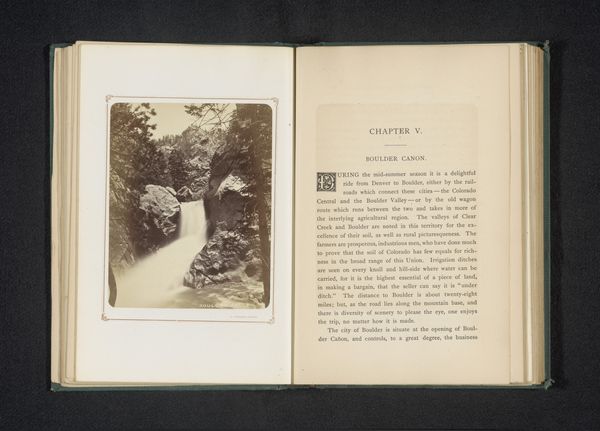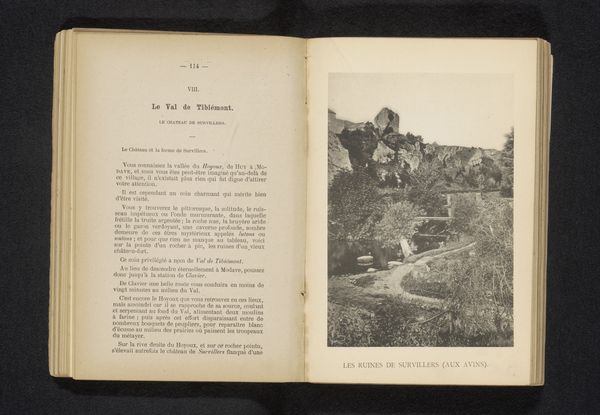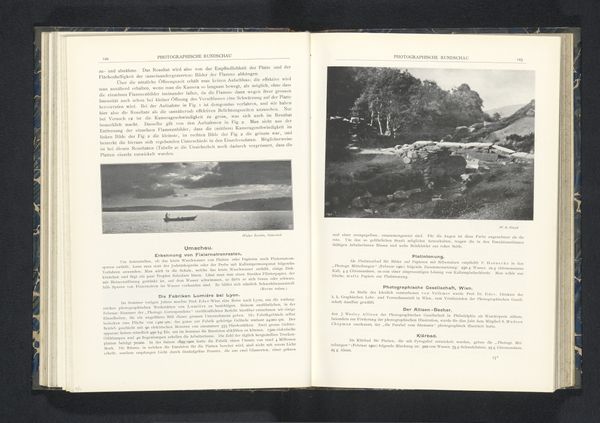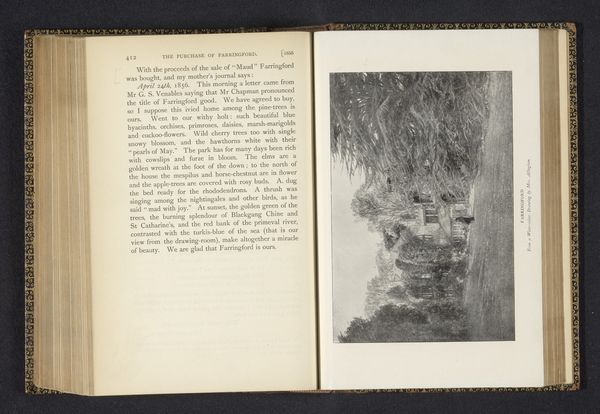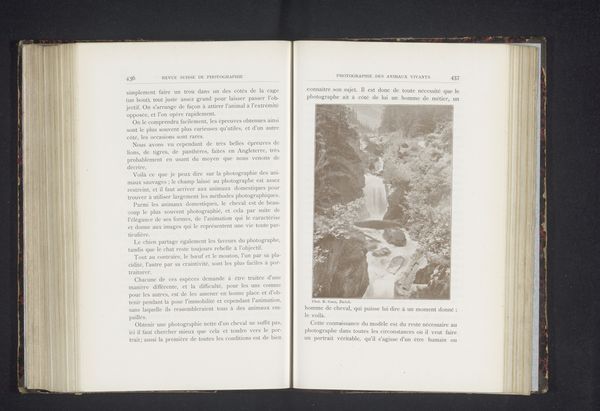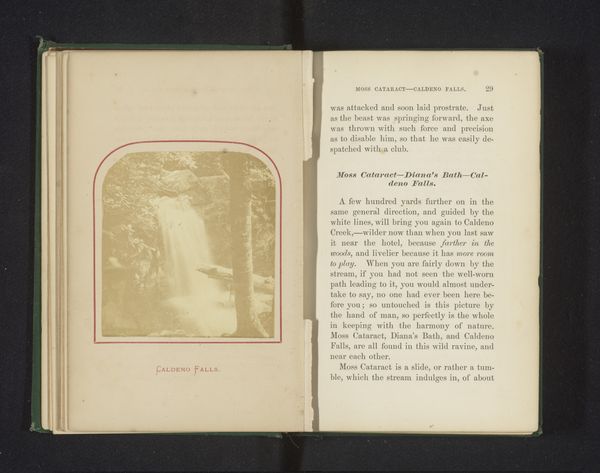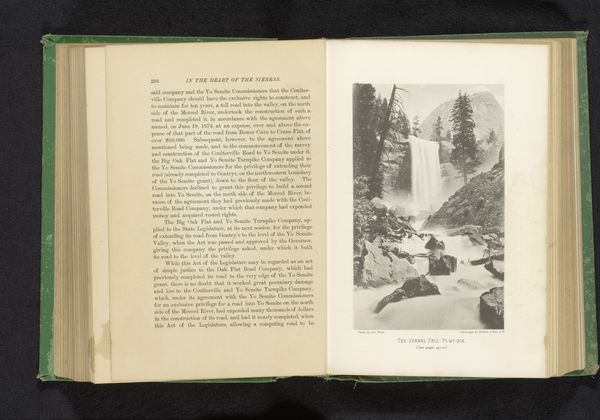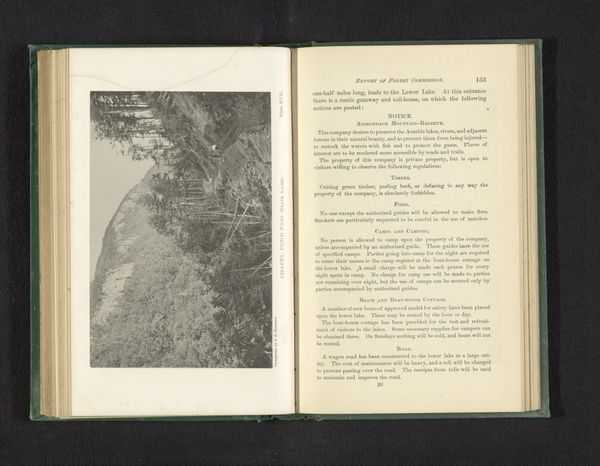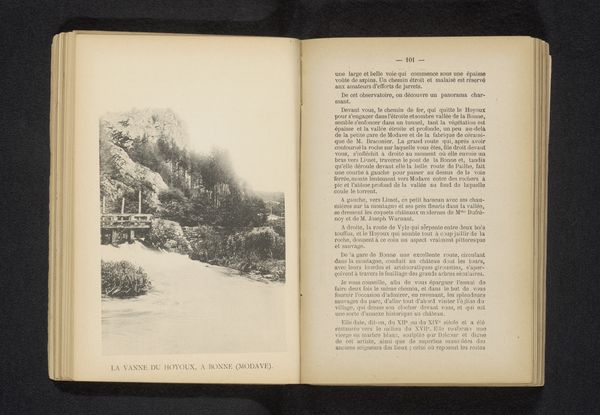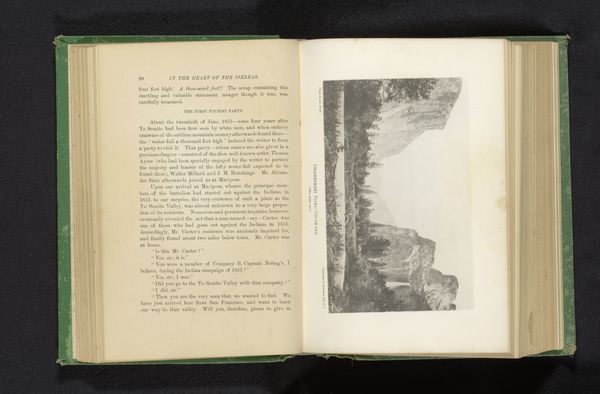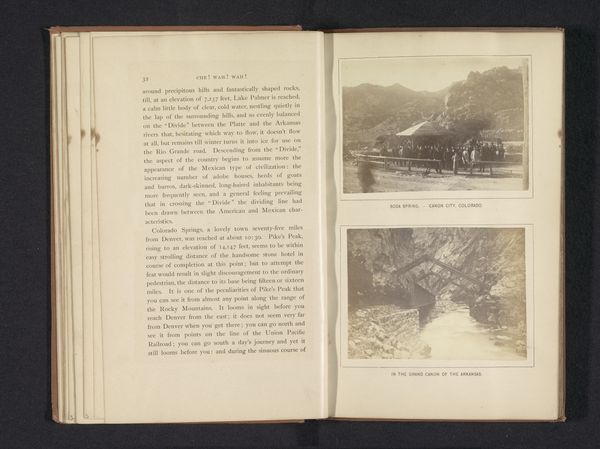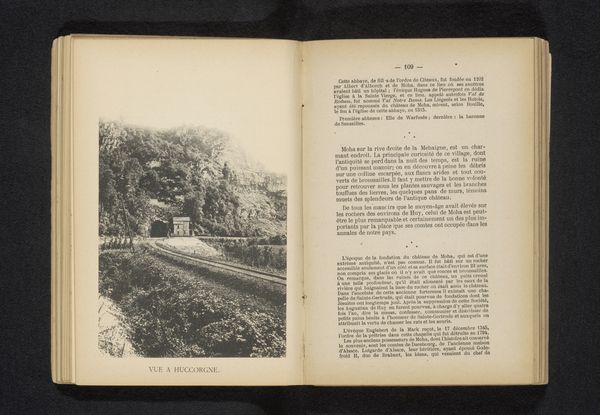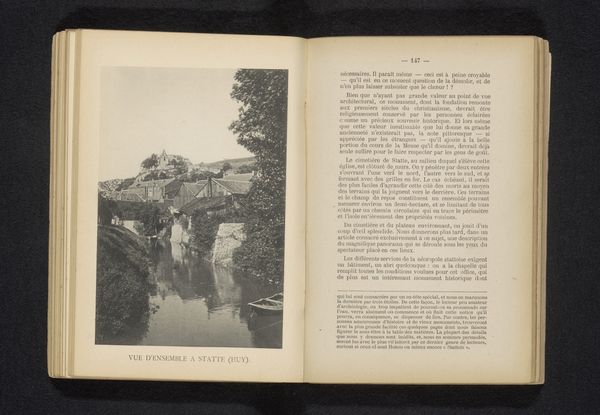
print, photography
#
still-life-photography
# print
#
book
#
landscape
#
waterfall
#
photography
Dimensions: height 143 mm, width 108 mm
Copyright: Rijks Museum: Open Domain
Curator: Ah, here's a particularly charming page. The photograph featured is titled "Top of Lal Lal Falls, near Ballarat, Australia." It was captured by H. Crips sometime before 1895, a classic landscape study. Editor: It feels almost dreamlike, doesn’t it? That blurring effect on the waterfall makes it seem like something out of a myth, all mist and movement. There’s a stillness to the surrounding nature that I find so striking next to it. Curator: Yes, there’s an interesting juxtaposition at play here. Consider how Crips frames the waterfall within its natural environment. The composition guides the eye from the static trees to the cascade, building a powerful contrast between stillness and flux. Semiotically speaking, the rushing water could represent the passage of time against the enduring landscape. Editor: And the light, too! See how it catches the top of the falls and then diffuses into the shadow below? It's dramatic and makes the falls appear almost ethereal. It is incredible the way that the artist framed the scene with the trees on the side with a bit of light leaking to the ground. Makes the landscape incredibly beautiful, in its natural state. Curator: Indeed, the use of light and shadow—chiaroscuro, if you will—emphasizes the three-dimensionality of the scene. In structuralist terms, we can view the composition as a system of binary oppositions: light versus dark, movement versus stillness, nature versus (implied) human presence, since someone had to photograph this scene from a distance. These oppositions generate meaning. Editor: It also captures a slice of old-world serenity. You almost expect fairies to start flitting around in the water! And even a small photograph makes you appreciate the sublime experience of seeing the grandeur of nature—to this end it really does its work perfectly. Curator: Agreed, there's something quite timeless about it. A meditation on nature’s beauty, rendered with a sensitivity to form and light. It gives insight into the way artists see the world, the perspective they can convey to those looking back at these scenes.
Comments
No comments
Be the first to comment and join the conversation on the ultimate creative platform.
